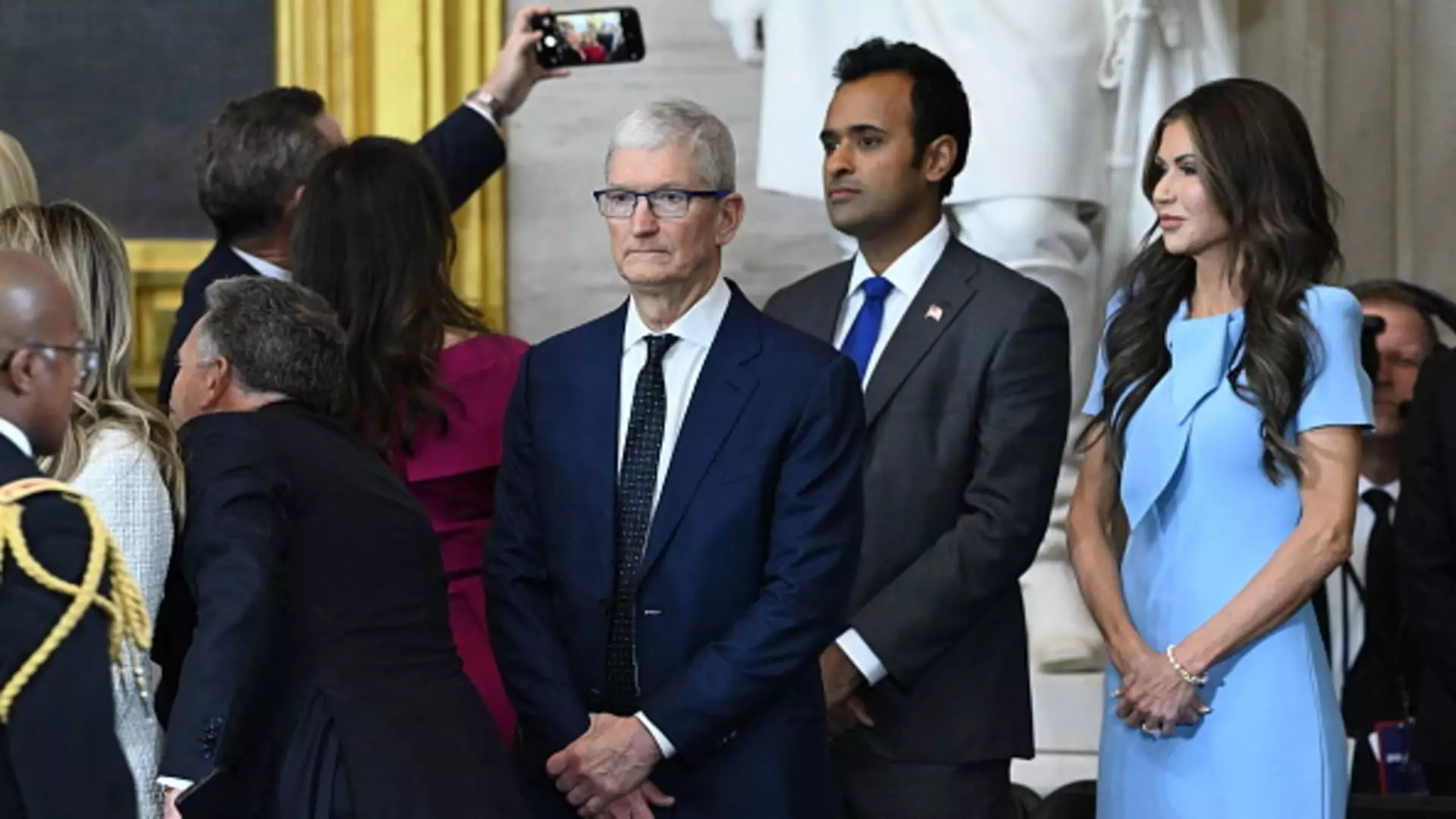In a business climate rife with uncertainty, Apple CEO Tim Cook’s recent revelations regarding the company’s navigation through Trump’s tariffs came as a mixed bag for investors. Although Cook heralded a “limited impact” on revenue during the first quarter of the year, the forthcoming $900 million in costs for the current quarter caught the attention of analysts, who expected much larger figures. This dichotomy speaks volumes about how major corporations, even those with seemingly perfect operations, are finding themselves vulnerable to political whims. While Cook displayed confidence in Apple’s ability to handle the situation, the unpredictable nature of tariff policies under the Trump administration is a thundercloud overshadowing the company’s future.
The Supply Chain Strategy: A Double-Edged Sword
Apple has leveraged its global supply chain to mitigate tariff exposure. Bringing in products sourced from countries like India and Vietnam shows that Apple is not merely a tech giant; it is a strategic player constantly adjusting its tactics. However, this can also be viewed through a critical lens. Depending on countries with lower tariffs feels like a game of hopscotch where one wrong move could lead to a fall; given that both nations might soon face hefty tariffs themselves. As Cook aptly pointed out, “I don’t want to predict the future,” which only highlights the uncertainty hanging over the company’s operational decisions.
One cannot overlook the irony that while Cook praises his operational team for deftly navigating the turbulent waters of tariffs, the reliance on shifting supply chains underscores a fundamental issue: Apple’s ability to control its destiny is compromised by political fluctuations. A world-class operational strategy may mitigate short-term losses, but can it endure the long-term repercussions of economic protectionism?
The Investor Sentiment: A Growing Discontent
The stock market’s reaction to Cook’s call was telling. A decline in Apple’s shares by up to 4% post-earnings report, despite the company surpassing revenue expectations, suggests that investors have grown fatigued with the constant drumbeat of uncertainty. The cavalcade of reassurance from Cook failed to inspire confidence; this could be attributed to an urgent demand for more than just optimistic language. Investors require transparency and predictability, two commodities that are hopelessly scarce in today’s fractious political climate.
Cook’s failure to provide guidance beyond the current quarter further exacerbates the situation. Rather than offering strategic foresight, the status quo remained. The essence of successful leadership lies in clear communication that can instill confidence among stakeholders. The inability to provide a roadmap ahead led to disenchantment from the very investors that fuel Apple’s growth.
The Consumer Reaction: A Lingering Question Mark
What perhaps remains most troubling is Cook’s admission of no evident spike in consumer purchases ahead of impending tariffs. Is this a reflection of the consumer’s awareness of the shifting dynamics in pricing, or does it signal underlying economic anxieties? Consumers today are astute and agile; they can differentiate the difference between necessity and luxury. If they’re unwilling to purchase Apple products in anticipation of price increases, what does that say about the brand’s position?
Shifting the country of origin for products doesn’t simply change duty rates; it raises questions about whether consumers will remain loyal as they grapple with their budgets. The judgment will ultimately lie in whether Apple can maintain its brand allure amidst these practical realities, especially with potential price hikes on the horizon due to tariffs.
The Bigger Picture: Tariffs as a Catalyst for Change?
Amidst this tumult, one could argue that tariffs may, in the longer run, force innovation across industries, compelling companies to rethink their supply relationships and operational models. However, for now, Apple’s ambivalence regarding future tariffs makes it precarious. If competition accelerates in the tech sector, driven by smarter supply chain maneuvers, Apple may find itself forced into a corner.
In a scenario where Apple places its bets on countries like Vietnam and India, the irony lies in the dependence on these very regions becoming potential sources of additional tariffs in the future. A large organization like Apple cannot afford to be caught off-guard by sudden regulatory changes that could negate years of strategic advantages cultivated through diversified sourcing.
The intricacies of operating a business that straddles international territories, coupled with fluctuating tariff rates, is a delicate dance of prediction and reassessment in uncertain times. As the situation evolves, it remains to be seen just how resilient Apple—and the broader tech industry—will be in the face of continued economic unpredictability.

